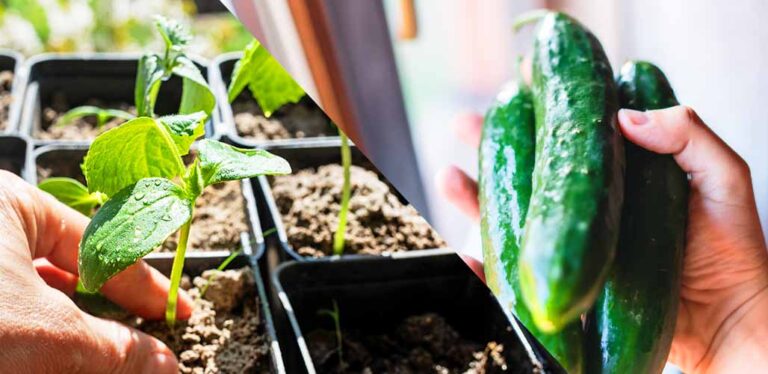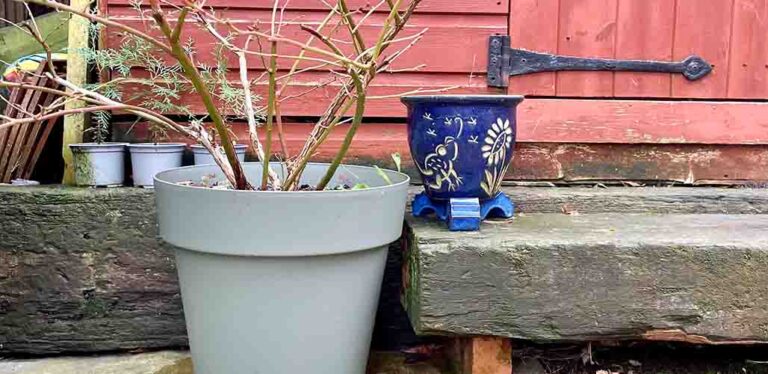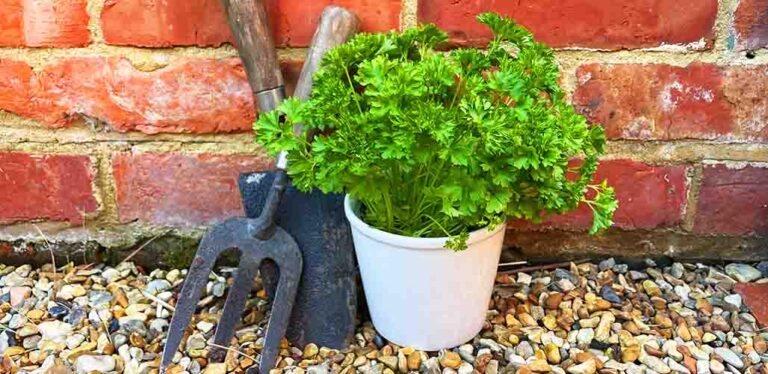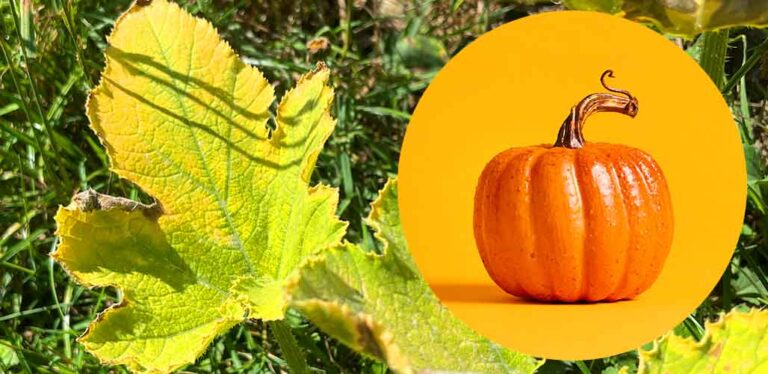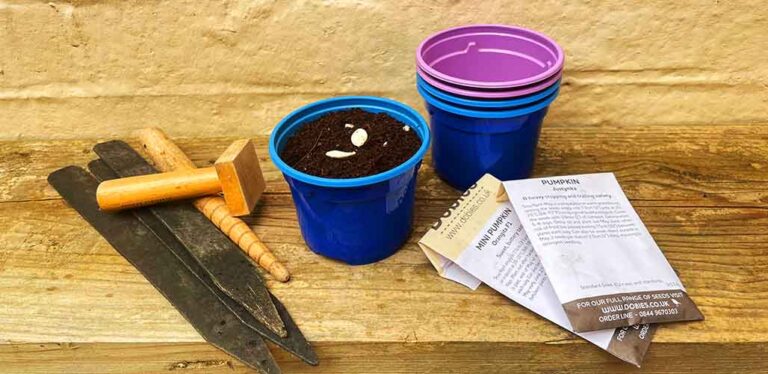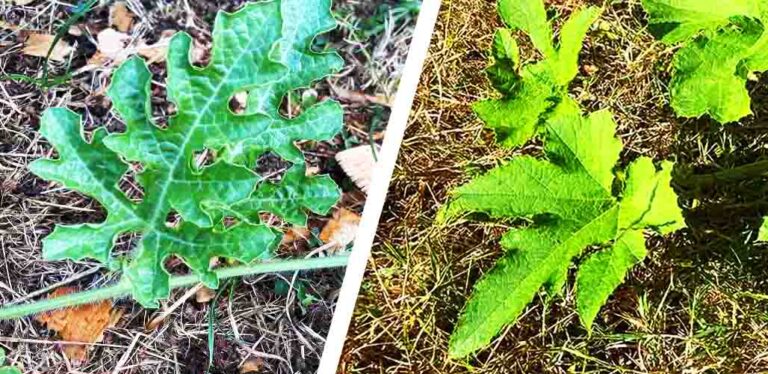How To Get Started With Pumpkins
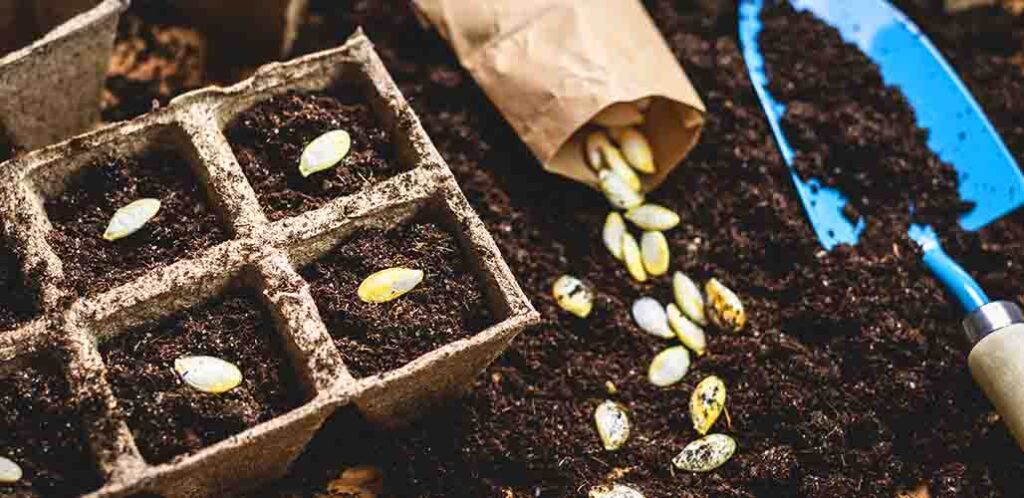
Pumpkins are heaps of fun to grow. And since they can be both edible and ornamental, they appeal to a really wide range of gardeners. They’re a popular jumping-off point for people keen to try growing produce for the first time, and an exciting first planting project for kids. All varieties of pumpkin are grown from seed sown in late spring or early summer. If you want to find out more about how to get started with pumpkins, we’re here to help you choose a variety and tend them all the way from seedling to fruit.
Contents
- Pumpkin basics
- Popular pumpkin varieties to grow yourself
- Growing conditions for happy pumpkins
- Getting started with pumpkins – sowing and growing
- Caring for pumpkin plants
- Pumpkin pests and diseases
- Troubleshooting common growing problems
- Harvesting and storing your crop
Most of us don’t aspire to growing pumpkins quite as big as this one, but the process is just as satisfying with smaller fruits! You can grow pumpkins to eat, and to carve at halloween. Or even just to use as fall decor in your home. When you choose which variety to grow, your mind might be on flavor, size, having an unusual ornamental appearance, or some practical concern. Such as being able to grow them in a small space. Whatever kind of pumpkin you plant, your top priorities are going to be finding enough sunny space for them to reach full size, and keeping them well fed and watered. Along the way, you’re going to make decisions about growing them horizontally or vertically, in containers or in the ground, and whether to aim for lots of small fruits, or one show-stopping big fruit.
Pumpkin basics
Humans have been cultivating pumpkins for at least 9,000 years. Historically, they were a valuable food source because they could be stored for months after harvesting without any special preserving techniques. Edible pumpkins are used in soups, traybakes, and of course, pies! The flesh can even be incorporated into cakes and breads. The seeds can either be saved for planting next season, or roasted and eaten as a tasty snack. Pumpkin flesh is a rich source of vitamin C, vitamin E and beta-carotenes. Our bodies use these to support healthy skin and a strong immune system.
Even people who don’t enjoy the taste of pumpkin still get a kick out of growing them for carving or decorate with. It’s thought that the tradition of carving vegetable lanterns started in Ireland, and Irish immigrants to America started using pumpkins they found there.
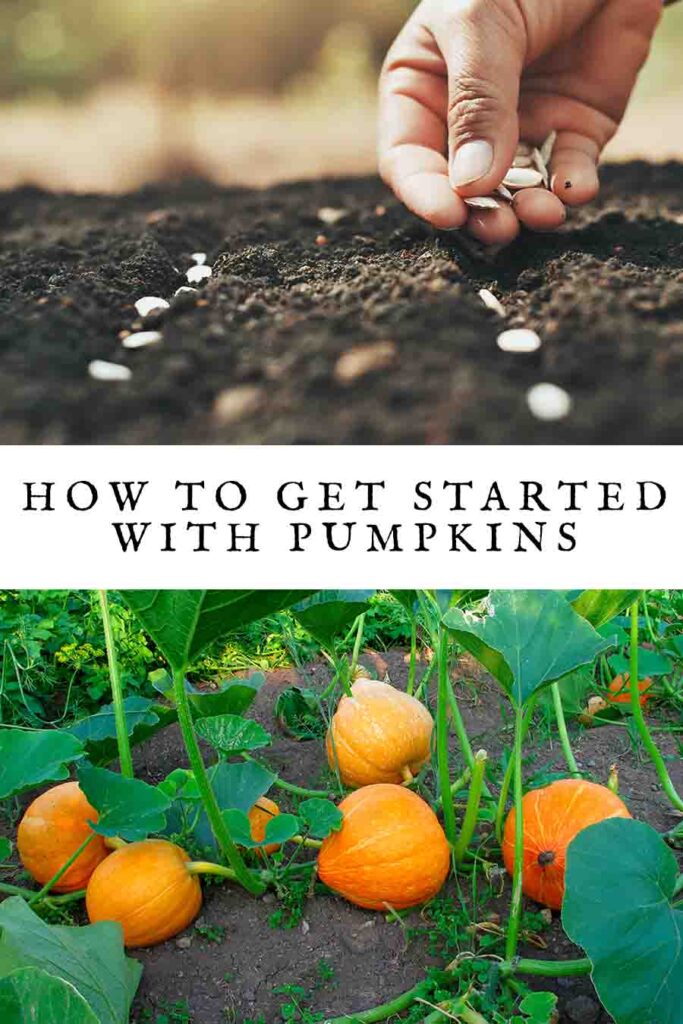
Popular pumpkin varieties to grow yourself
Literally hundreds of pumpkin varieties are cultivated in America. Experimenting with new and unusual types each year is part of the fun for lots of growers. Here are some tried, tested, and reliable varieties for eating, carving, and decorating with:
Eating
- Rouge Vif’ d’Etampes. A French heirloom variety, and beloved by chefs for its exceptional flavor. It grows up to 40lbs, which some people find impractical to use up in one go. But its flavor really lends itself to savory dishes like curries and casseroles, which can be cooked in large batches and frozen.
- Dickinson. This is the pumpkin for making pumpkin pies. In fact a specific and closely guarded strain of Dickinson pumpkins are grown by Libbey’s for their famous pie filling. Fruits reach 10 – 40lbs.
- Jarrahdale. A New Zealand variety which stores extremely well, so you don’t have to worry about consuming your harvest as quickly as possible. The fruits weigh 7 – 10lbs and have a good all round flavor for both sweet and savory dishes.
- Jack-Be-Little. Palm sized pumpkins you can cook in the microwave then stuff and roast. A favorite among growers because they can be grown vertically in a small space. Each vine produces up to 10 fruits each.
Carving
- Connecticut Field. One of the most widely grown varieties by commercial jack o’lantern farms. If you’ve ever bought a pumpkin to carve from the grocery store, there’s a good chance it was a Connecticut Field. Vigorous, reliable, and easy for beginners.
- Atlantic Giant. Probably the biggest variety of pumpkin you can grow. Whilst still technically edible, the bigger they get, the more bland and stringy they become. This variety is definitely just for fun, and impressing the neighbors at halloween. Think about how you’re going to move the fruits before you plant it, because they can get truly massive.
Looking at
- Turks Turban. Cute and quirky shaped. Technically squash, and tasty to eat if you pick them young. Eat some, and save some for decor.
- Casperita. Casperita pumpkins weigh little more than a pound and have smooth, crisp white skin. They’re perfect for decorating with paint markers if carving is just too much hassle!
Growing conditions for happy pumpkins
Pumpkins start out as tiny seeds, but before you plant one, it’s a good idea to make sure you can see this growing project through to the end. Pumpkin vines’ demands aren’t complicated, but they aren’t modest either. They need generous amounts of:
- Space
- Warmth and sunshine
- Water
- Food
Space
Pumpkin vines can grow up to 20 feet long, and their roots can spread even further still. Large varieties should be planted at least 3 feet apart, in rows 6 feet apart. Smaller varieties can be planted closer together. The smallest pumpkins can even be grown in 10 gallon planters or grow bags.
Warmth and sunshine
The leading pumpkin growing states in America are Illinois, California and Texas. So it’ll come as no surprise to hear that they love warm conditions and heaps of sunshine. Pumpkin seeds need soil temperatures of at least 65°F in order to germinate. Their leaves will also be damaged or killed outright by frost, so if you germinate the seeds indoors you’ll need to keep them inside until it’s safe to plant them out. If you live in a region with a short growing season between the first and last frosts, choose a variety which is ready to crop quickly. Jarrahdale, or any of the mini varieties, are a safe bet.
Water
Pumpkins are thirsty plants. They need a lot of water, and vines left to dry out usually fail to set fruit. Water-stressed pumpkins are also more prone to diseases like mildew, and infestations of pest species.
Food
Pumpkins are also greedy plants. You’ll need to make sure they have access to plentiful nutrients in the soil. In my experience, and something I definitely overlooked in the first few years I grew pumpkins, is that it is never too early to think about how you’re going to keep them fed. Probably the easiest solution, but it requires a bit of foresight, is applying a thick mulch of compost to the place your pumpkins will grow at least two months before you plant them. Then the worms can drag the goodness deep down into the soil for you. If it’s too late for this, you can feed them weekly during the growing season instead.
Getting started with pumpkins – sowing and growing
Now we’ve looked at what your pumpkins need, let’s turn to how you’re going to provide it. Pumpkin seeds can be sown directly into their final location as soon as the night time soil temperatures are above 65°F. Alternatively, sow them indoors in 3” pots a couple of weeks before your last frost date, and plant the seedlings out when the weather warms up. If it’s already later than that, check here if it’s too late to plant pumpkins seeds this year.
If you’re growing pumpkins in quick draining soil, it’s a good idea to dig a shallow saucer in the soil about 12 inches across, and plant your seed or seedling in the center. This will help direct the water straight down into the soil around your plant. If you’re planting in heavy or slow draining soil, plant your seed or seedling on a small mound or ridge, to stop water puddling around the stem and causing rot.
Sow seeds flat on their side, and 1 inch deep. If you’re sowing directly outdoors, plant 2 or 3 seeds together, and remove the two weakest seedlings. Large pumpkin varieties can only be grown horizontally due to the weight of their fruit. But lots of small and medium varieties can be grown vertically over trellises or garden arches. To grow pumpkins vertically, position the supporting structure first, and then sow or plant your pumpkins at the base.
Caring for pumpkin plants
Pumpkins take 80-130 days to get from sowing to harvesting, depending on the variety. Small varieties are the quickest to crop, and large varieties take longer. During that time you’ll need to keep them watered, feed them if you didn’t mulch the soil before planting, and protect them from pests and diseases.
- Water vines in the ground deeply once a week if there has been less than an inch of rainfall. It’s better to water deeply and less frequently, than lightly every day. When you water lightly, the moisture evaporates off the soil surface before it can soak down to your plants’ roots.
- Vines in containers usually need watering every day.
- Vines can grow up to 20 ft long. If you don’t have space for them to travel in a straight line you can gently reposition them so they grow in a circle instead.
- When your vines start to bear flowers, start feeding them once a week with tomato food. Tomato food is rich in potassium, which supports the production of flowers, and the setting and ripening of fruit.
- To grow large pumpkins for carving, limit your vines to a single fruit each and remove any subsequent ones which start to set.
- For large pumpkins trailing on the ground, rest growing fruit on a piece of wood, a large tile, or a few sheets of cardboard. This prevents contact with the soil, which can cause rotting.
- Some climbing pumpkins vines can easily support the weight of their own fruit. Others might benefit from a bit of help. Make a sling using old pantyhose and tie it to the trellis or arch.
Pumpkin pests and diseases
Once they are established, pumpkin vines are usually pretty robust and resilient against pests and disease. Another reason why they are a good growing choice for beginners! But, they are sometimes victims of:
- Aphids
- Cucumber beetle
- Whitefly
- Squash bugs
- Squash vine borers
- Slugs and snails
- Powdery mildew
- Ants
Aphids
Aphids are voracious little sap suckers that colonize pumpkin vine stems and the undersides of their leaves. As well as depleting the plants of sap, they can transmit viruses which inhibit growth. Small numbers can be rubbed off with your thumb. Larger infestations can be evicted by spraying with water that has a little dish soap or neem oil added. Another effective solution is introducing their natural predator, the ladybug. You can even buy boxes of ladybugs online for this very purpose!
Cucumber beetle
Cucumber beetles have a yellow carapace with black stripes or spots. They menace all members of the cucurbit family, including pumpkins. As well as munching on the stems, leaves and fruits of your vines, they transmit diseases like bacterial wilt. You can deter them with neem oil, lure them away with beetle traps, or even suck them up with a handheld vacuum and deposit them elsewhere.
Whitefly
Like aphids, whiteflies feast on the sap from the underside of pumpkin leaves. A tell tale sign of infestation is when the upper surface of damaged areas get sun-scorched. Whiteflies also produce honeydew, which fosters fungal infections like sooty mold. Get rid of whiteflies by blasting them with a hose, spraying them liberally with water and dish soap, or vacuuming them up.
Squash bugs
Squash bugs look like shield bugs, and they consume the sap of pumpkins. They’re not as destructive as aphids or whiteflies, so they’re rarely a problem for established plants. But if you spot a cluster of their brown eggs on the underside of a young plant, rub them off with your thumb.
Squash vine borers
Squash vine borers have a red carapace with black spots, and black wings. They lay their eggs at the base of pumpkin vines, and the larvae bore into the stem and start eating it from the inside out. Once they have attacked, there’s no way to recover your vine. So try wrapping aluminum foil around the base of the stem to stop vine borers gaining access.
Slugs and snails
The spiny stems of established pumpkin vines and thick rind on their fruit are usually enough to keep slugs and snails at bay. But these slimy nuisances are quick to home in on young seedlings, or use damaged or wilted leaves as a gateway for invading older vines. To defeat them, keep your plant well watered, mulch around the base with sharp sand or grit, and remove any leaves which get damaged.
Powdery mildew
Powdery mildew is a fungal infection which looks like gray-white powder on the surface of pumpkins’ leaves. It spreads very easily and it is quite hard to budge when it appears. There’s a school of thought that powdery mildew is just the inevitable fate of a pumpkin vine at the end of the growing season, and there comes a point when there’s no point worrying about it. But if your fruit is still a long way from ripening, you can cut away the most infected leaves and treat the rest with fungicide to buy your vines more time.
Ants
Some ant species are also frequent visitors of pumpkins. They don’t usually cause any damage to mature, healthy vines. But their presence can put off pollinating insects like bees, and reduce the number of flowers which set fruit.
Troubleshooting common pumpkin growing problems
Pumpkins are generally unfussy and easy crops, but that doesn’t mean growing them is always plain sailing. Some common problems are:
- Mixing them up with other cucurbits
- Getting lots of flowers, but no fruit
- Leaves turning yellow
- Fruit drop
Mixing them up with other cucurbits
A surprisingly common pitfall is getting unlabelled pumpkin and watermelon seedlings mixed up! If this has happened to you, your pumpkins have the more blue-green leaves with jagged edges. And your watermelons have the more yellow-green leaves, with rounded edges.
Getting lots of flowers, but no fruit
Another common problem is vines which seem to be producing all flowers, and no fruit. Pumpkins produce separate male and female flowers. Female flowers can easily be identified because they have a swollen stem, which eventually turns into the fruit if they are pollinated. It’s pretty normal for plants to produce a flush of male flowers at first, followed by female flowers later. However, if the conditions are wrong somehow – too shaded or too dry for example, it can inhibit female flower production. If you’ve got both types of flowers and you’re still not getting fruit, it’s likely to be because pollination isn’t happening. For example because you don’t have many pollinating insects visiting your yard. You can pollinate them yourself by swirling around the inside of a male flower, and then a female flower, with a soft fluffy paintbrush.
Leaves turning yellow
Yellow pumpkin leaves are a frustratingly ambiguous sign of stress for growers. They can be caused by aging, pests, drought, and nutrient stress, among other things. In fact, I’ve written a whole article about the possible causes of yellow pumpkin leaves, and how to address each one.
Fruit drop
Finally, another common affliction of pumpkin growers is fruit-drop, when immature fruits shrivel up and drop off the vine instead of ripening. This is a clear sign your plant is stressed – either due to lack of water, shortage of nutrients, or infestation by a pest or disease.
Harvesting and storing your crop
Pumpkins are ready to harvest when the stems turn dry and woody. This happens in late summer or early fall. Sever them from the vine with as long a stalk as possible, and leave them to cure in the sunshine for 7-10 days. Alternatively, you can leave pumpkin fruit on the vine until the first frosts are due. But always remove them before the frosts start. The woody stem and cured skin effectively seal off the inside of the pumpkin. So the flesh stays ripe and fresh for up to 6 months. Store them somewhere cool and well ventilated until you’re ready to use them.
How to get started with pumpkins – summary
Pumpkins aren’t just for halloween – they’re delicious too. There’s a variety for everyone, and they’re pretty easy to grow as long as you plant them in rich soil and water them well throughout the growing season. If space is a problem, try growing a mini variety vertically instead. Remember to check young plants regularly for pests, and lift fruits slightly off the ground to protect them from rot. And finally, don’t forget to tell us how you get on in the comments box down below! In fact, let us know what varieties you’re thinking of trying right now!

